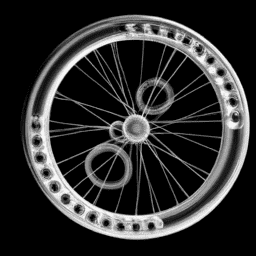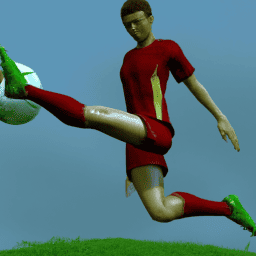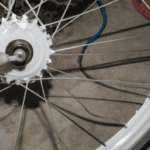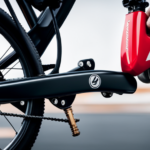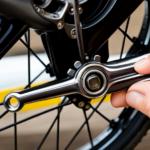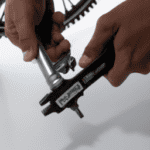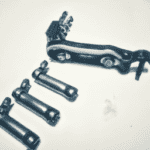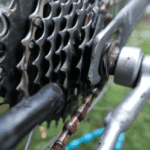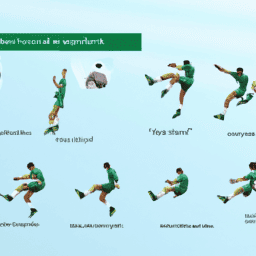For cycling enthusiasts, maintaining your bicycle’s wheel bearings is paramount to ensuring its optimal performance. Wheel bearings are essential for the smooth operation of your bike’s wheels, necessitating their lubrication with appropriate grease to keep them in perfect condition.
In this article, I will share my knowledge and expertise on the different types of grease for bicycle wheel bearings, helping you choose the best one for your bike. Choosing the right type of grease for your bike’s wheel bearings can make a significant difference in the performance and longevity of your bike.
With so many different types of grease available in the market, it can be overwhelming to make the right choice. However, understanding the importance of grease for wheel bearings, along with the factors to consider when choosing grease, can make the decision-making process easier.
In the following paragraphs, I will delve deeper into the different types of grease for bicycle wheel bearings, helping you make the right choice for your bike.
Key Takeaways
- There are three main types of grease for bike wheel bearings: lithium-based, synthetic, and ceramic
- When choosing grease, consider material compatibility and operating conditions
- Apply grease sparingly and evenly, avoiding over-greasing, which can cause overheating and premature failure
- Regularly inspect and clean wheel bearings, and reapply high-quality, bicycle-specific grease every six months for regular riders to maintain optimum performance and prevent damage.
Understanding the Importance of Grease for Wheel Bearings
Understanding the importance of grease is crucial in ensuring the longevity and smooth operation of bicycle wheel bearings. Proper lubrication reduces the effects of friction between the moving parts of the bearings, which helps prevent wear and tear.
Without proper lubrication, bearings may wear down faster, leading to potential damage to the wheels and other parts of the bike. Furthermore, the effects of friction are not limited to just wear and tear. Friction can also lead to heat buildup, which can cause the grease to break down and become less effective. This can result in increased friction and wear, leading to further damage.
Therefore, using the right type of grease for bicycle wheel bearings is essential in maintaining optimum performance and preventing damage. Moving on from the importance of proper lubrication, let’s dive into the different types of grease suitable for bicycle wheel bearings.
Types of Grease for Bicycle Wheel Bearings
If you want your ride to be smooth and effortless, it’s crucial to use the right lubricant for the tiny moving parts that keep your wheels spinning. When it comes to bicycle wheel bearings, there are different types and properties of grease to choose from.
The three most common types are lithium-based, synthetic, and ceramic grease. Lithium-based grease is the most widely used type of grease for bicycle maintenance. It’s affordable, easy to find, and compatible with most wheel materials.
Synthetic grease, on the other hand, is a more expensive option but offers better lubrication and protection against extreme temperatures and moisture. Ceramic grease, as the name suggests, contains microscopic ceramic particles that make it more resistant to wear and tear.
When choosing the right type of grease for your bicycle wheel bearings, it’s important to consider the compatibility of the grease with different wheel materials.
Now, let’s move on to the factors to consider when choosing grease for your bicycle wheel bearings.
Factors to Consider When Choosing Grease
When choosing the right lubricant, you should take into account the materials of your wheels, the conditions you ride in, and the frequency of maintenance. Different types of grease have varying properties that make them suitable for specific applications.
For instance, high-temperature grease can withstand extreme heat, while water-resistant grease can repel water. Consider the following factors when choosing grease for your bicycle wheel bearings:
-
Material Compatibility: Some greases may react with certain materials, causing corrosion or damage to the bearings. Ensure that the grease you choose is compatible with the materials used in your wheel bearings.
-
Operating Conditions: If you frequently ride in wet or muddy conditions, you need a grease that can withstand water and prevent rust. On the other hand, if you ride in high-temperature areas, you need a grease that can handle the heat and prevent degradation.
It’s essential to choose the right type of grease to ensure that your bicycle wheel bearings perform optimally. Once you’ve selected the right grease, the next step is to apply it correctly to your wheel bearings.
How to Apply Grease to Wheel Bearings
Firstly, before applying the lubricant, make sure to clean the components thoroughly to avoid any dirt or debris getting mixed in with the lubrication, which could cause damage in the long run.
Once you have cleaned the wheel bearings, it’s time to apply the grease. Proper technique is important when applying grease to wheel bearings. The best method is to apply a small amount of grease to the palm of your hand, and then use your fingers to work the grease into the bearings. This will ensure that the grease is evenly distributed throughout the bearings.
One common mistake when applying grease is over-greasing the bearings. Too much grease can cause the bearings to overheat and fail prematurely. Another mistake is using the wrong type of grease. Always use high-quality grease specifically designed for bicycle wheel bearings.
How often you need to reapply grease to your wheel bearings depends on how often you ride your bike. For regular riders, it is recommended to reapply grease every six months to ensure that the bearings are properly lubricated.
To maintain your wheel bearings, it’s important to keep them clean and free from dirt and debris. Regular cleaning will help to prevent damage to the bearings. Additionally, check your bearings regularly for any signs of wear or damage and replace them as needed.
By following these simple tips, you can keep your wheel bearings in excellent condition and enjoy a smooth ride every time.
Tips for Maintaining Your Wheel Bearings
As a cyclist, I know the importance of maintaining my bike’s wheel bearings. Regular inspection, cleaning, and lubricating are key to ensuring the smooth operation of my bike’s wheels.
If I notice any signs of wear or damage, I know it’s time to replace the bearings to avoid further damage and potential safety hazards while riding.
Regular Inspection
Regularly inspecting your bicycle wheel bearings is crucial to make sure they’re properly lubricated with the correct type of grease. Wheel bearing wear and signs of damage can occur over time, especially if you ride in wet or dusty conditions. By inspecting your bearings regularly, you can catch any issues before they become major problems.
Here are some tools for inspecting bearings that you may need:
- A clean, flat surface to work on
- A set of cone wrenches to remove the wheel from the bike
- A bearing press or punch to remove and install the bearings
- A magnifying glass or strong light to help you see any signs of wear or damage
Once you’ve inspected your bearings and determined that they’re in good condition, you can move on to the next step of cleaning and lubricating them. By keeping your bearings clean and properly lubricated, you can extend their lifespan and ensure that your bike rolls smoothly and efficiently.
Cleaning and Lubricating
To keep your bike’s wheel bearings in top shape, it’s crucial to clean and lubricate them regularly. This process involves a thorough degreasing process to remove dirt, grime, and old grease that may have accumulated over time. You can use a solvent-based cleaner or a biodegradable degreaser that is safe for the environment. Make sure to follow the manufacturer’s instructions when using any degreaser and avoid getting it on braking surfaces or other components that may be affected.
After degreasing, it’s time to apply the proper lubrication technique to the bearings. Different types of grease are available, and it’s essential to choose the right one for your bike’s bearings. A high-quality bicycle-specific grease is recommended as it is designed to withstand the rigors of cycling and provide long-lasting protection. Apply the grease sparingly and evenly, making sure to cover all the surfaces of the bearings. Once lubricated, spin the wheel to distribute the grease evenly and wipe off any excess.
With proper cleaning and lubrication, your bike’s bearings will run smoothly and efficiently, providing a better riding experience.
To ensure your bearings are always in good condition, it’s important to know when it’s time to replace them. The next section will cover how to identify when it’s time to replace bearings and the steps to take for a successful replacement.
Replacing Bearings When Necessary
If you want to keep your bike running smoothly, it’s crucial to know how to identify and replace worn-out bearings.
Signs of worn-out bearings include roughness in the wheel when it spins, or a clicking or grinding noise when you ride. If you notice any of these signs, it’s time to replace your bearings.
To replace the bearings, you’ll need to remove the wheel from your bike and take it apart. Once the bearings are exposed, you can remove them and replace them with new ones.
It’s important to use the right size and type of bearings for your wheel, so check with your local bike shop or consult your bike’s manual for guidance.
After replacing the bearings, be sure to clean and lubricate the wheel before reassembling it. With proper maintenance, your bike’s wheel bearings should last for many miles of smooth riding.
Frequently Asked Questions
How often should you grease your bicycle wheel bearings?
Regular maintenance is key to preserving the life of your bicycle wheel bearings. I recommend greasing them every 6 months to ensure optimal performance. Consider the benefits of using ceramic bearings and choose the appropriate lubricant for your riding conditions.
Is it safe to mix different types of grease for your wheel bearings?
Mixing greases can cause compatibility issues, leading to reduced lubrication and potential damage to wheel bearings. It is not recommended to mix different types of grease, as each has unique properties and could affect the performance of the other.
Can you use regular automotive grease on your bicycle wheel bearings?
I don’t recommend using regular automotive grease on bicycle wheel bearings. Alternative grease options like lithium or synthetic-based grease are better suited for the job. Proper grease application techniques are also important for optimal performance and longevity.
How can you tell if your wheel bearings need to be regreased?
My bike’s bearings were on their last legs, so I inspected them for signs of wear. To my dismay, they were dry and gritty. Lesson learned: always regrease bearings regularly to keep them running smoothly.
Can you over-grease your wheel bearings and cause damage?
Over-greasing wheel bearings can cause damage by creating excessive heat and pressure. Signs of under greasing include a grinding noise or rough feeling when spinning the wheel. Proper maintenance and the right amount of grease are essential for optimal performance.
Conclusion
In conclusion, choosing the right type of grease for your bicycle wheel bearings is crucial for ensuring optimal performance and longevity. Just like how a car needs oil to keep its engine running smoothly, your bike needs grease to keep its bearings rolling smoothly.
Think of grease as the lifeblood of your bike’s wheel bearings. It provides lubrication, reduces friction, and prevents wear and tear. Without it, your bearings would quickly deteriorate, leading to a bumpy and unsafe ride.
So, take the time to research and choose the best grease for your bike’s needs, and don’t forget to regularly maintain and apply it to your wheel bearings. Your bike (and your wallet) will thank you in the long run.
